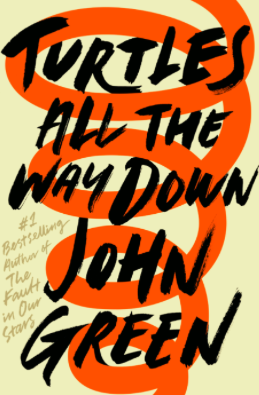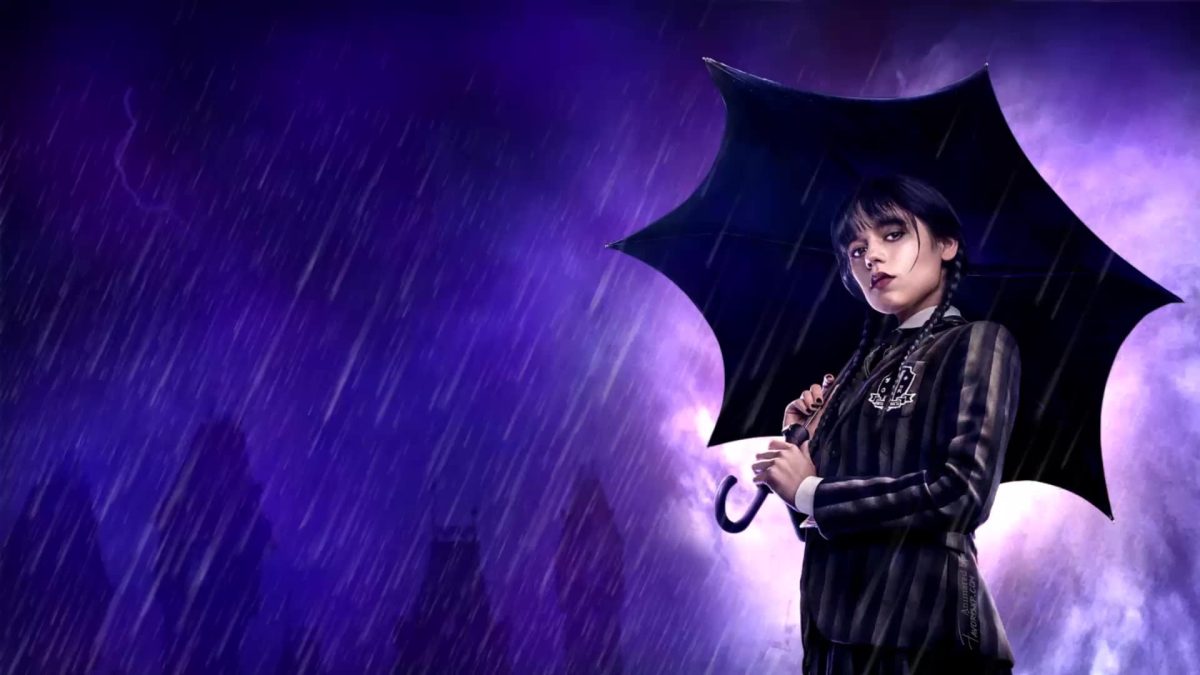Unravel the Pages
Shellebrating Turtles All the Way Down

Spiraling all over the page, the orange figure is meant to represent the protagonist, Aza’s, thoughts surrounding her mental illness. In John Green’s latest book, he explored OCD and anxiety by pulling from his own experiences.
January 10, 2018
John Green is known by many to be a pioneer in the young adult genre, captivating audiences with worldwide successes, such as The Fault in Our Stars and Paper Towns. On October 8, Green released his latest phenomenon titled Turtles All the Way Down. With a 4.26 out of 5 star rating on Goodreads and already receiving praises from The New York Times, The Washington Post, and Entertainment Weekly, Green’s latest novel is almost guaranteed to appeal to most, if not all, of its readers.
The novel’s odd title comes from an expression of the infinite regress problem in cosmology. The phrase “turtles all the way down” was popularized by Stephen Hawking in his book, A Brief History of Time. The meaning of the phrase highlights the absurdity of trying to find the “end” of a concept that requires testing beyond any sort of objective format. This connects to the way that protagonist Aza sees her OCD and her thoughts associated with it–as being a never-ending spiral with no end unless she gives into what her brain is telling her to do. Turtles are also incorporated into the setting, making the title more punny.
The story follows a sixteen-year-old girl named Aza, who involuntarily joins a mystery involving a runaway billionaire. Along with her best friend Daisy, they attempt to navigate through their adventures while also maintaining a good relationship with the fugitive’s son, Davis. Aza struggles with being both a good friend and a good detective, all while living with her own constantly spiraling thoughts.
While Green is one of the most acclaimed young adult authors of this generation, he has received criticism for creating unnecessarily quirky characters and for encouraging the usage of the “manic pixie dream girl” trope. The “manic pixie dream girl” is an annoyingly free-spirited female character whose only purpose is to be a love interest to the male protagonist and lead him out of his sorrows, which is where many readers draw parallels to Alaska Young from Green’s novel Looking for Alaska and Margo Roth Spiegelman from Paper Towns. However, in his latest novel, the character development and complexity of the figures in Turtles All the Way Down is phenomenal, and Green was able to master balancing both interesting and relatable characters.
One thing John Green tackles in his novel is featuring a protagonist that struggles with OCD and anxiety. The author commented that he pulled from his own experiences with the mental illnesses to showcase a better representation of mental health. Senior Maria Alejandra expressed, “With every page, I could feel Aza’s frustrations. Many of my pages were marked with ‘I get it’ or ‘I understand.’”
Overall, John Green’s latest novel will be able to capture audiences with its lovable characters, significant representation of mental illness, and page-turning event sequencing. So to those who consider Green’s works to be masterful literature, those who disliked his past novels, and those who have yet to give them a chance, read Turtles All the Way Down. You will not be disappointed!











